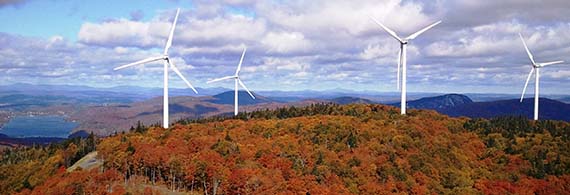
A new study finds that, between 2012 and 2014, the Northeast’s Regional Greenhouse Gas Initiative (RGGI) added $1.3 billion in economic value to the nine-state region, led to the creation of more than 14,200 new jobs, and cut electricity and heating bills, saving consumers $460 million.
States participating in the program have found that “regulating carbon emissions from power plants through market-based mechanisms goes hand in hand with economic benefits.”
The report, “The Economic Impacts of the Regional Greenhouse Gas Initiative on Nine Northeast and Mid-Atlantic States,” was prepared by Analysis Group energy experts and funded in part by the Energy Foundation. It analyzes the economic impacts of RGGI’s most recent three years.
Launched six years ago, RGGI is the first market-based cap-and-trade program in the U.S. to reduce greenhouse gas emissions. Participating states include Connecticut, Delaware, Maine, Maryland, Massachusetts, New Hampshire, New York, Rhode Island, and Vermont. RGGI states establish a regional cap for carbon emissions and then create their own, individual plans to cut carbon and offer a declining number of carbon emission allowances for sale through regional auctions. Power plant owners buy those allowances at auction—which gives them the right to emit specific amounts of carbon dioxide—or find ways to clean up carbon emissions. Auction proceeds go back to the states, which have reinvested billions of dollars back into their economies.
Since 2009, the RGGI states have received and disbursed virtually all of nearly $2 billion in proceeds from CO2-allowance auctions back into the economy in various ways, including on: energy efficiency measures; community-based renewable power projects; credits on customers’ bills; assistance to low- income customers to help pay their electricity bills; greenhouse-gas-reduction measures; and education and job training programs. Several success stories are posted here.
Each individual RGGI state has seen economic benefits as the region cut annual carbon emissions by about a third from 2008 (140 million metric tons) to 2014 (90 million metric tons), according to the report.
The Analysis Group said the report findings provide valuable lessons for states across the country now evaluating their options under the Clean Power Plan, the U.S. Environmental Protection Agency’s proposal to limit carbon emissions from power plants across the country. In fact, the group called RGGI “a blueprint for Clean Power Plan success.”
Findings from the new report were released today at the National Association of Regulatory Utility Commissioners (NARUC) conference in New York.
Read the report’s executive summary here. Read Bloomberg Business News coverage here.
